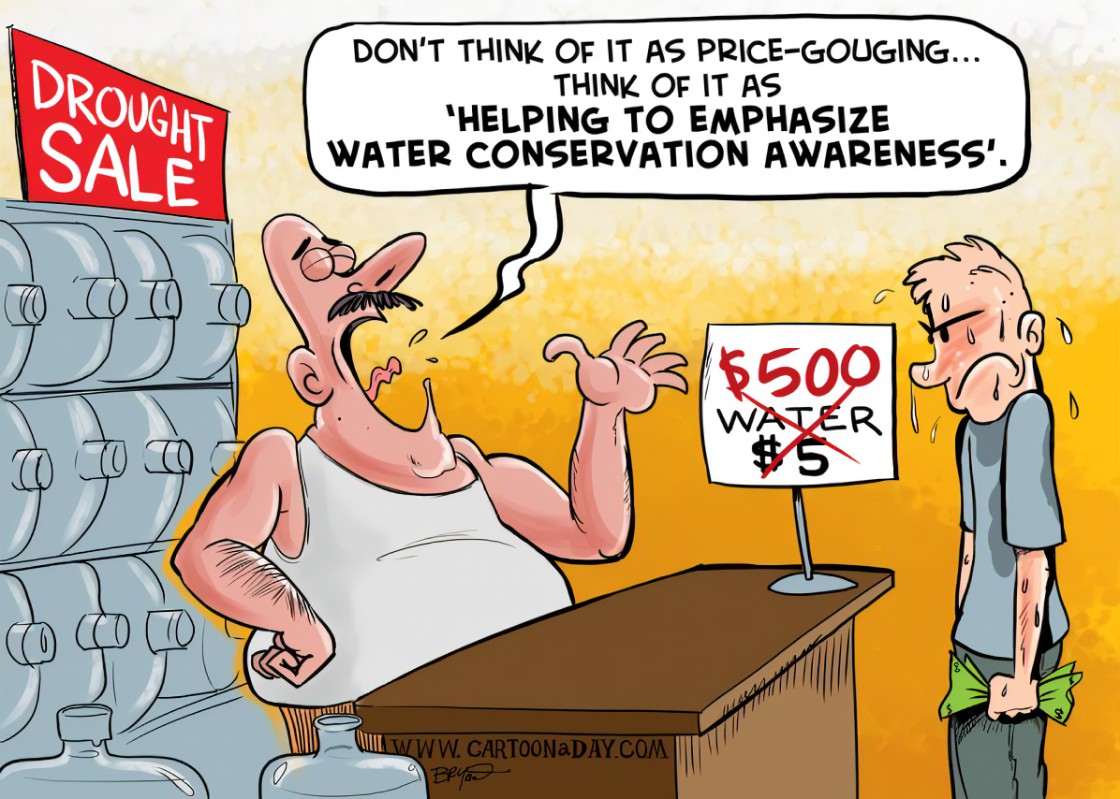 $15Bn!
$15Bn!
That’s what the Government is auctioning off this afternoon in 20-Year Notes. The last auction (July 20th) was at 4.036% and another auction above 4% will send a bad signal to the bond market that higher rates are settling in for a long stay. The 20-Year is just a small portion of the $150Bn the Government borrows every month – ALONG WITH THE $400Bn THEY ROLL OVER – at ever-increasing rates. As you can see, 20-Year notes peaked in October at 4.39% and it does look like we’ve been consolidating for a move higher all year long since.
$550Bn in US debt that is auctioned each month is 28% of all the Debt in the World and the problem is there may not be enough money left in the World for them to keep feeding our particular beast as it’s growing and growing and other countries also need money for Infrastructure, Fighting Global Warming and fixing all the damage Global Warming is already causing.
 The World is also running out of drinking water, here’s ShelBot’s Report:
The World is also running out of drinking water, here’s ShelBot’s Report:
-
- 🤓Water scarcity is a global challenge that affects billions of people and threatens human health, food security, energy production, and environmental sustainability1.
- Water scarcity is caused by a combination of factors, such as population growth, urbanization, climate change, pollution, overexploitation, and poor governance1.
- According to the UN World Water Development Report 20231, between two and three billion people experience water shortages for at least one month per year, and this number will increase in the coming decades, especially in cities.
- The report also warns that the global urban population facing water scarcity is projected to double from 930 million in 2016 to 1.7–2.4 billion people in 20501.
- The Middle East and North Africa regions have the highest level of water stress in the world, due to their arid climate, high population density, and political instability2. Climate change is expected to worsen the situation by reducing rainfall and increasing evaporation2.
- South Asia is another region with high water stress, where more than a billion people depend on the Indus, Ganges, and Brahmaputra river basins for their livelihoods2. These rivers are fed by melting glaciers and snow in the Himalayas, which are threatened by rising temperatures2.
- In India, more than 100 million people live in areas with severe water stress, and the country is expected to face a 50% deficit in water supply by 20302. This could have negative impacts on the country’s economic growth, social stability, and environmental sustainability2.
- In China, 80% of rivers are too toxic for fish, let alone human consumption4. This could result in increased health care costs, reduced productivity, and lower quality of life4.
- In Europe, Spain is one of the countries most affected by water scarcity, as it faces recurrent droughts and heat waves that reduce its water resources and damage its agriculture2. The country also suffers from water pollution and overuse of groundwater2.
- In North America, several states in the western and central US are experiencing severe water stress due to prolonged droughts and increasing demand from agriculture and industry2. The Colorado River, which supplies water to 40 million people and irrigates 15% of US crops, is at its lowest level in history2.
- The consequences of water scarcity are manifold and interrelated. They include reduced food production, increased hunger and malnutrition, increased poverty and inequality, increased conflicts and migration, increased health risks and diseases, reduced access to education and gender equality, reduced economic growth and development, and degraded ecosystems and biodiversity12].
- Water pollution can contaminate water sources with harmful substances, such as chemicals, pathogens, nutrients, metals, and plastics3. This can pose risks to human health, such as cancer, infections, and diseases, as well as to aquatic life, such as fish kills, algal blooms, and biodiversity loss3
- Water scarcity and pollution can also create financial risks for investors who are exposed to sectors that depend on water or contribute to water problems. These include agriculture, energy, mining, manufacturing, tourism, and real estate5. For example, water shortages can increase the costs of sourcing and force conservation measures for water-intensive industries5
- To address the global water crisis, the report calls for urgent action at all levels of governance, from local to international. It recommends enhancing cooperation and coordination among different sectors and stakeholders, improving water management and allocation practices, promoting water conservation and efficiency measures, investing in water infrastructure and innovation, increasing public awareness and education, and strengthening legal and institutional frameworks1.
- On the other hand, water scarcity and pollution can also create investment opportunities for companies that are working to solve the water crisis. These include water treatment, smart infrastructure, efficient delivery, and innovative technologies6. For example, water treatment companies can provide solutions for desalination, purification, recycling, and testing of water quality6. Smart infrastructure companies can offer products and services for metering, monitoring, leakage detection, and network optimization of water systems6.
Be careful out there!


 And now a word from Robo John Oiliver:
And now a word from Robo John Oiliver: 




